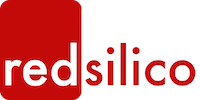This is just a shout out for af123 over on the hummy.tv forums, who a couple of months back released a firmware patch for the Humax HDR-Fox T2. The major modifications visible after installing the firmware are telnet and a package management system (opkg). This opens up a world of possibilities, and the guys on the forums have indeed been busy... In fact the results are very polished and packages of good quality and very easy to install. So far I have installed packages to deal with encryption and CIFS (Windows shares), which I'll talk about a bit now.
In order to comply with Freeview restrictions on HD transmission, which I have previously ranted about, the Humax HDR-Fox T2 actually encrypts all its recordings as it writes them to disk. The box decrypts them on playback and, in the case of SD recordings only, when copying to an external USB drive though the PVR's user interface. This "do not decrypt" flag is recorded in one of the metadata files associated with a recording. Thanks to the efforts of a few kind souls, the auto-unprotect package scans for new recordings and unsets this flag. This means that when copying HD recordings to an external disk, they are decrypted just like the SD ones are.
The second package, cifs, allows the PVR to mount CIFS volumes (Windows shares). Since the box has DLNA and FTP this may seem superfluous, but in fact it allows for two possibilities:
- By mounting my ReadyNAS at the appropriate points, I can copy recordings to the NAS through the interface. Using FTP for this is only useful for backup purposes as the recordings are not decrypted. The beauty of mounting a volume (in my case a remote CIFS share) this way is that the Humax thinks it is copying to an external disk and so decrypts the recordings for me as it copies them. Thanks to auto-unprotect, this also includes HD recordings.
- I have previously noted that the T2 has different media playback capabilities when playing from disk versus playing via DLNA. I can now playback all content over CIFS by navigating the mounted directory. I can report that this works brilliantly, and the videos play back as if they were on the box's own hard disk.
